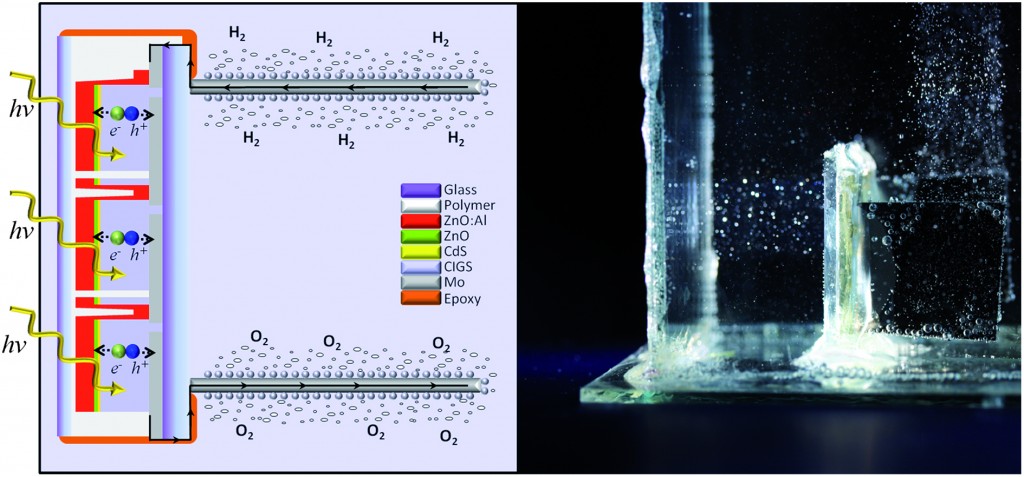Researchers from Sweden have demonstrated a process where the crucial 10 % solar-to-hydrogen (STH) efficiency threshold – required for a device to be considered commercially viable – is met by connecting a number of solar-absorbers in series along with a Pt-based catalyst.
Harnessing the power of the sun to directly split water in order to produce hydrogen is anticipated to be an important process in post-carbon, green economies.
Normally there is a trade-off between high solar-absorption and high water splitting efficiency due to the mismatch between the energy required for water splitting (about 2 eV) and the most efficient band-gap for harvesting solar light (about 1.35 eV).

In their recent article, the research group from Uppsala University have overcome this problem by interconnecting 3 cells, based on the semiconductor CuInxGa1-xSe2 (CIGS), into a single monolithic device. By placing the semiconductors in series, and tuning them for efficient absorption of the solar spectrum (achieved by varying the In:Ga ratio), their device can have both a high solar absorption efficiency and a sufficiently high electrochemical potential to drive the water splitting reaction.
Due to the relative simplicity of the approach, the authors suggest that this may be an economically compatible route to green H2 production. What’s more, they claim that this novel approach has room for an increase of several percentage points in STH efficiency, and that it has opened the door to many other photoabsorbers, which were previously disregarded due to too-low band gaps, being re-investigated. In any case, the outlook for this field certainly looks bright.
By Aled D. Roberts
Take a look at the article in EES:
A monolithic device for solar water splitting based on series interconnected thin film absorbers reaching over 10 % solar-to-hydrogen efficiency
Jesper Tor Jacobsson, Viktor Fjällström, Martin Sahlberg, Marika Edoff and Tomas Edvinsson
DOI: 10.1039/C3EE42519C, Paper










